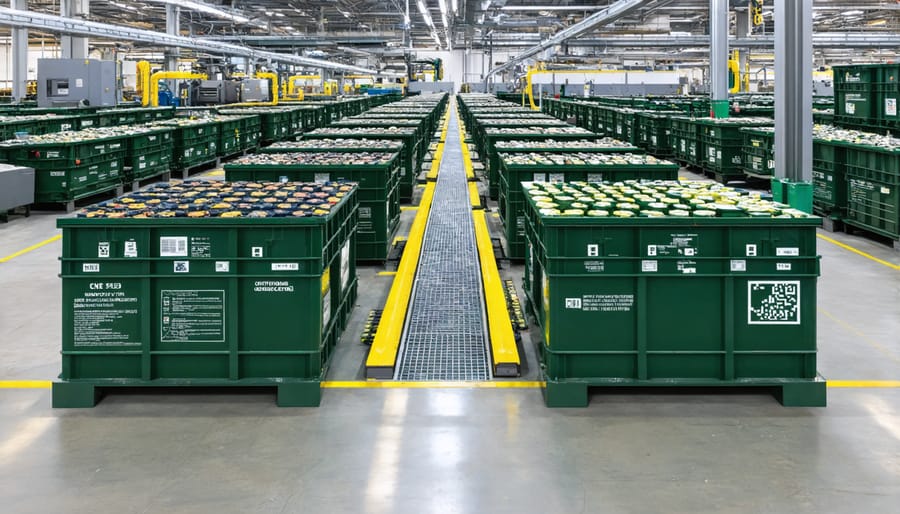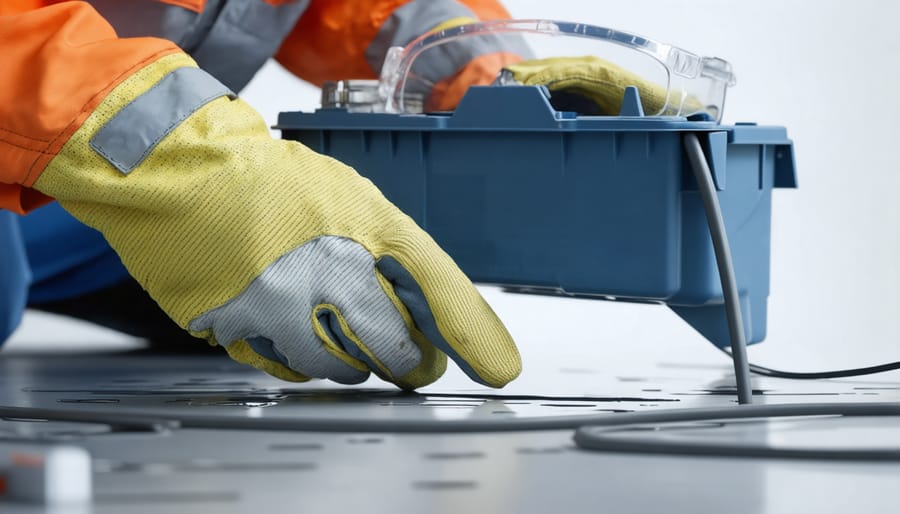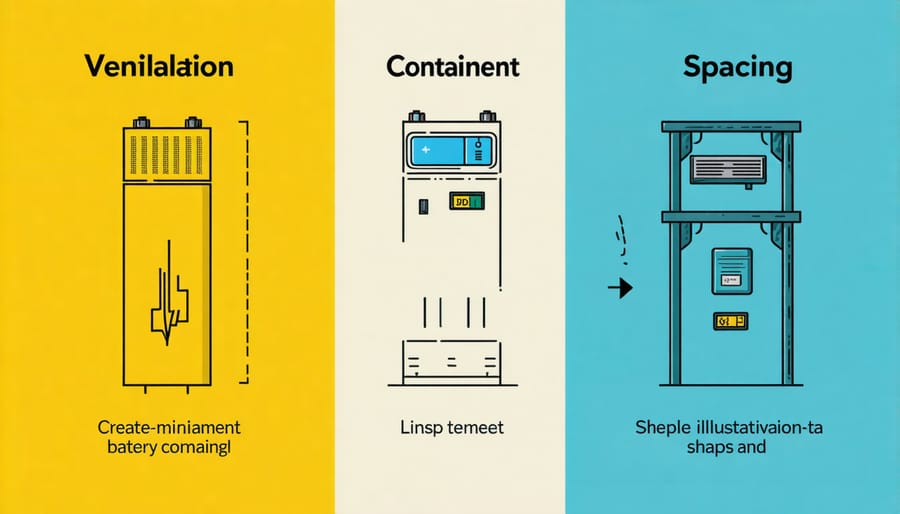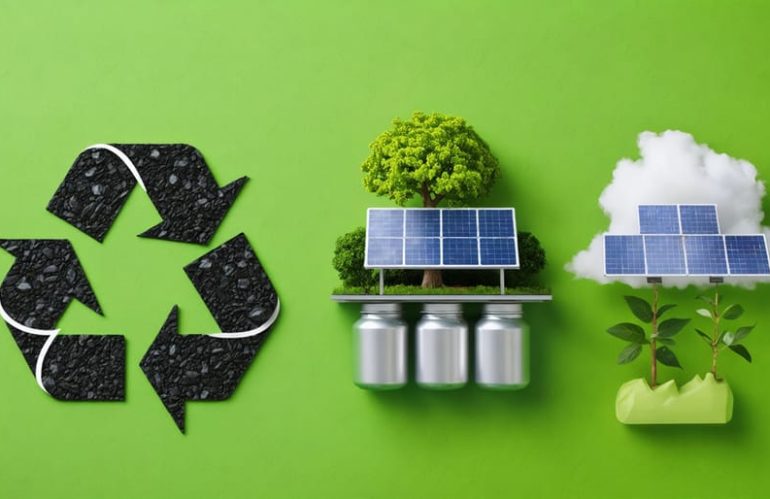Properly disposing of lead-acid batteries requires careful handling and specific safety protocols to protect both the environment and human health. As these crucial components of battery energy storage systems reach the end of their lifecycle, responsible disposal becomes essential. While these batteries contain hazardous materials, recycling centers can recover up to 99% of their components for reuse in new batteries. Understanding proper disposal methods not only prevents environmental contamination but also ensures compliance with local regulations and helps maintain the sustainability of renewable energy solutions. This guide will walk you through the safe, legal, and environmentally responsible ways to dispose of your lead-acid batteries, whether they’re from your solar setup, backup power system, or other household applications.
Why Proper Battery Disposal Matters for Your Home
Environmental Impact at Home
Improperly stored lead-acid batteries at home can pose serious risks to your property and local environment. When batteries crack or leak, the sulfuric acid can contaminate soil, potentially harming your garden and landscaping. This acid can also seep into groundwater, affecting drinking water quality and nearby vegetation. Battery acid may damage concrete surfaces in garages or storage areas, leading to costly repairs.
Indoor storage presents additional concerns, as batteries can release hydrogen gas during charging, creating potential fire hazards. The lead content in these batteries is particularly concerning for homes with children and pets, as even small amounts of exposure can be harmful. To protect your property, always store batteries in acid-resistant containers, keep them in well-ventilated areas away from living spaces, and regularly check for signs of damage or leakage.
Remember that responsible battery storage is temporary – the safest solution is prompt disposal through proper channels when batteries reach the end of their life cycle.
Safety Considerations for Families
Lead-acid batteries require careful handling to protect your family’s safety. Always wear protective gloves and eyewear when handling these batteries, and keep them in a well-ventilated area away from living spaces. Store batteries upright on a non-conductive surface, away from children and pets, and never in areas where they might be exposed to extreme temperatures or moisture.
If you notice any damage, leaks, or bulging, avoid direct contact with the battery acid, which can cause severe burns. In case of acid contact with skin or eyes, flush immediately with water and seek medical attention. Keep baking soda nearby to neutralize potential acid spills.
Never attempt to open, modify, or repair lead-acid batteries at home. When transporting batteries for disposal, secure them properly to prevent tipping or damage. Place batteries in leak-proof containers and avoid storing multiple batteries where their terminals might touch, which could create dangerous short circuits.
Modern Recycling Solutions Made Simple
Professional Recycling Services
Professional recycling centers offer safe and environmentally responsible solutions for disposing of lead-acid batteries. These certified facilities are specifically equipped to handle hazardous materials and ensure proper recycling of all battery components. Many automotive retailers, including AutoZone, O’Reilly Auto Parts, and Advance Auto Parts, offer free battery recycling services and may even provide a core charge refund when you bring in your old battery.
As part of regular solar battery maintenance, you can schedule pickup services through local recycling centers or battery manufacturers. These professionals will safely transport your batteries to appropriate facilities, eliminating the risks associated with handling heavy, potentially hazardous materials yourself.
Many municipalities also organize household hazardous waste collection events throughout the year, providing convenient opportunities for battery disposal. To locate certified recyclers in your area, visit Earth911.com or contact your local waste management authority. Some recycling centers may offer documentation of proper disposal, which can be important for warranty purposes or environmental compliance.
Remember to keep your batteries in their original packaging or place them in sturdy containers during transport. Most recycling centers accept batteries free of charge, as they can recover valuable materials like lead and plastic for reuse in new products.
The Recycling Process Explained
The recycling process for lead-acid batteries is surprisingly efficient, with up to 99% of battery components being recoverable and reusable. When your battery arrives at a recycling facility, it first goes through a battery breaking machine that crushes it into small pieces. These pieces then enter a separation process where different materials are sorted.
The plastic components, mainly the battery cases, are separated and cleaned before being melted down and reformed into new battery cases or other plastic products. The lead components, including plates and terminals, are melted in special furnaces at controlled temperatures. This molten lead is then purified and poured into molds to create new battery parts.
The sulfuric acid electrolyte solution undergoes one of two processes: it’s either neutralized and converted into water safe for treatment facilities, or it’s processed into sodium sulfate, which is used in detergents, glass, and textile manufacturing.
During the entire process, advanced filtering systems ensure that no harmful emissions are released into the environment. The recovered materials then go back into the manufacturing chain, where they become components of new batteries or other products. This closed-loop recycling system helps conserve natural resources and reduces the environmental impact of battery production.
Remember, recycling one lead-acid battery helps prevent hazardous materials from entering landfills while providing valuable materials for manufacturing new products.

Steps for Safe Battery Removal and Storage
Preparation and Safety Equipment
Before handling lead-acid batteries, it’s essential to gather the proper safety equipment and tools to ensure safe battery handling practices. Start with personal protection equipment (PPE), including chemical-resistant gloves, safety goggles, and acid-resistant apron or clothing. A face shield provides additional protection against potential acid splashes.
Keep baking soda nearby to neutralize any acid spills, along with plenty of clean water for emergency rinsing. You’ll need plastic containers or leak-proof boxes for temporary storage and transportation. A battery carrying strap or handle makes moving these heavy items safer and easier.
Essential tools include an adjustable wrench for terminal removal, wire brushes for cleaning connections, and disposable rags or paper towels. Have thick plastic bags ready to contain any leaking batteries and prevent acid contact with other surfaces.
Ensure your work area is well-ventilated and keep a basic first aid kit within reach. Store all safety equipment in an easily accessible location, and always check that items are in good condition before starting any battery-related work. Remember to keep children and pets away from the work area during handling and temporary storage.

Temporary Storage Guidelines
Before recycling your lead-acid batteries, proper temporary storage is crucial for safety and environmental protection. Store batteries upright in a cool, dry place with temperatures between 40-80°F (4-27°C). Choose a well-ventilated area away from direct sunlight and heat sources, preferably with a concrete or acid-resistant floor.
Never stack batteries directly on top of each other, as this can cause damage and potential leaks. Instead, use a sturdy shelf or pallet system, ensuring batteries are stable and won’t tip over. Keep them away from metal objects to prevent short circuits, and inspect regularly for signs of damage or leakage.
For added safety, place batteries on an acid-resistant container or tray to catch any potential leaks. Keep children and pets away from the storage area, and clearly mark it as a battery storage zone. Don’t store batteries for longer than six months before recycling, as their condition may deteriorate over time.
When handling batteries, always wear protective gear including acid-resistant gloves and safety glasses. Keep baking soda nearby to neutralize any acid spills, and ensure you have easy access to water for emergency rinsing.

Finding Local Disposal Resources
Finding a proper disposal facility for your lead-acid batteries is easier than you might think. Most auto parts stores, including major chains like AutoZone, Advance Auto Parts, and O’Reilly, accept used batteries for recycling at no cost. They typically offer a core charge refund when you bring in your old battery, making it a win-win situation.
Many local hardware stores and home improvement centers also maintain battery recycling programs. Simply call ahead to confirm their acceptance policy and any specific requirements they might have for drop-off.
For municipal options, check your local government’s website or contact your waste management department. Many communities offer household hazardous waste collection events throughout the year, where you can safely dispose of batteries along with other potentially harmful materials.
Earth911’s recycling locator is an excellent online resource – just enter your zip code and “lead-acid batteries” to find nearby recycling facilities. Additionally, battery manufacturers and distributors often maintain their own recycling programs, so it’s worth checking with your battery’s manufacturer.
Remember to transport your batteries safely by keeping them upright and securing them to prevent spills. Most facilities require batteries to be intact and not leaking. If possible, place the battery in its original box or a sturdy container during transport.
Proper disposal of lead-acid batteries is crucial for both environmental protection and human safety. Throughout this guide, we’ve explored the importance of handling these batteries with care and following established disposal protocols. Remember that lead-acid batteries are 99% recyclable, making them one of the most successfully recycled consumer products when disposed of correctly.
By taking your used batteries to certified recycling centers, auto parts stores, or participating retailers, you’re not only complying with environmental regulations but also contributing to a sustainable future. These facilities ensure that valuable materials like lead and plastic are recovered and reused, reducing the need for new raw materials.
Never dispose of lead-acid batteries in regular trash or leave them exposed to the elements. Instead, make the responsible choice by properly storing and transporting them to appropriate facilities. Many locations even offer incentives or cash back for your old batteries, making environmentally conscious disposal financially rewarding as well.
By following proper disposal practices, you’re protecting our environment, supporting the circular economy, and ensuring a safer community for everyone. Let’s all do our part in responsible battery disposal.









